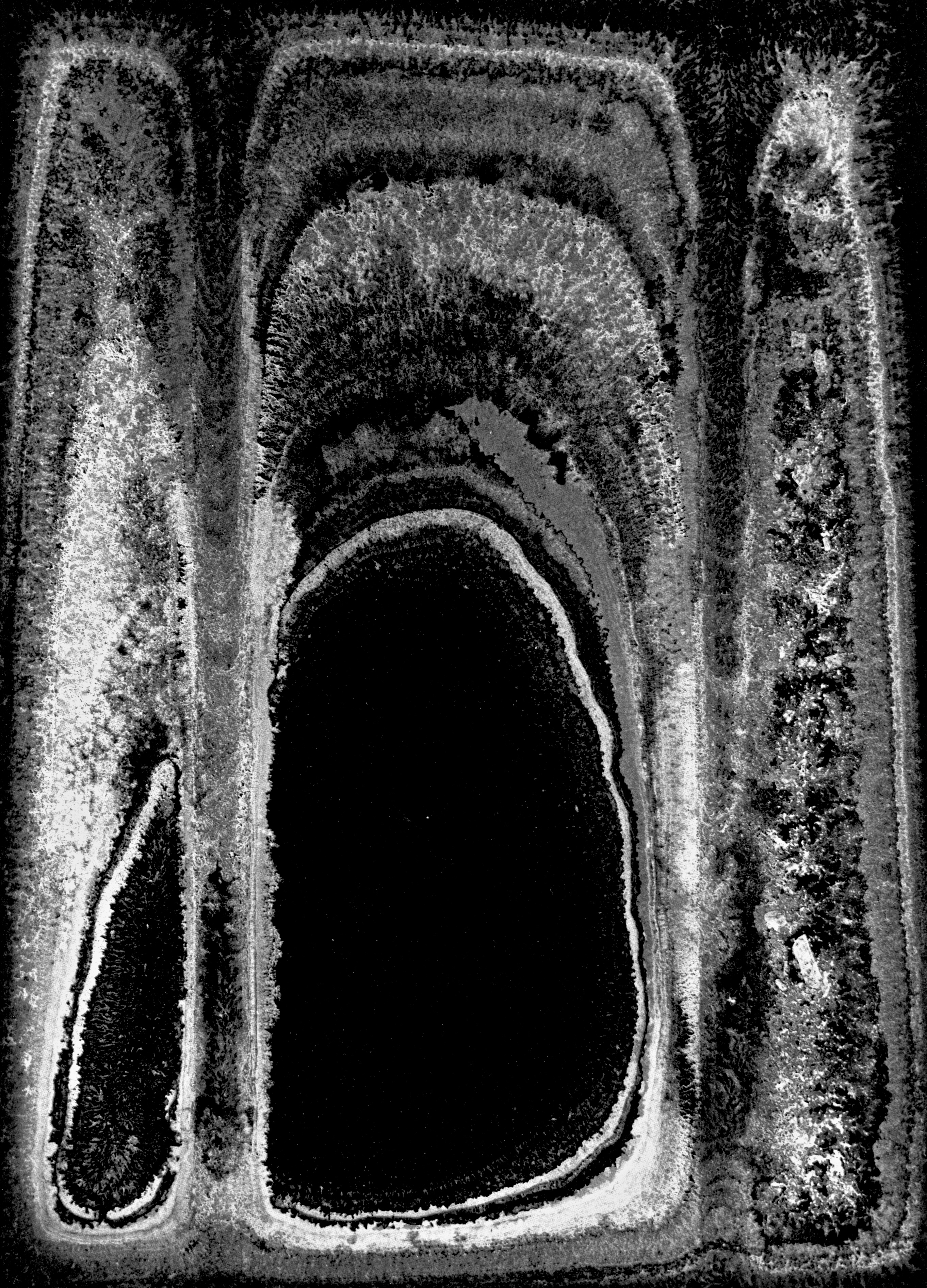
(Untitled, 1962)
(and see also Pictures Come From Pictures: Selected photographs 1955-2007)
A photograph by Carl Chiarenza has been pretty much constantly in my mind since I encountered it in Chiarenza: Landscapes of the Mind:

(and see also Pictures Come From Pictures: Selected photographs 1955-2007)
...a basic tenet of Carl's philosophy about photography, which is the idea that "pictures come from pictures." Every single image produced by anyone has a connection with another image, sometimes explicitly and other times more subtly. (pg 17)So I am happy to acknowledge this image as an inspiration for some threads that I'm currently knotting into photographic macramé.
Another book I happened upon recently is Douglas Beasley's Zen and the Art of Photography Handbook, which includes a number of his "accidental ensōs":
The ensō is a circular symbol most often painted in a single brush stroke... It embodies one of the defining aspects of Zen Buddhism, no-mind, where one is free from thoughts and emotions while being completely present in the now. It is believed that while in this state of total presence, true creativity can arise. Some Zen Buddhists believe that the character of the artist is fully exposed in how she or he draws an ensō. Some artists will practice drawing an ensō daily, as a kind of Spiritual Practice. For me, finding and photographing these unintentional ensōs is a form of spiritual practice.I won't claim 'spiritual practice' for my own search for ensōs, but I'm beginning to realize that there's a great deal more going on than the collection of circular figures. Explication takes us into a set of wee-hours thoughts that I had the wit to write down, and that bear very directly on Simplicity and on my own development as a hopefully-ever-more-conscious photographer.
After a very fruitful day of exploring the Public Alleys of Boston's Back Bay, during which I had rather frivolously gathered a series of 'urban ensōs' from detritus and debris underfoot, I awoke with the phrase "objects of contemplation" in the mental foreground. The words were linked to the Chiarenza photograph, to those ensōs I'd harvested, and to the series of doors I had walked by (but not photographed) on Beacon Hill, after the Public Alley adventure. I got up and wrote down a cascade of linked thoughts:
I'm trying not to mystify or over-invest in the symbolic content of circle or door, and sometimes a cigar is just a cigar, but once one has the idea that a simple object may entrain complexities, it's likely that one will come to savor the variety of those complexities, and thus to seek out further examples of circles and doors. And so the next day we went back to Beacon Hill and began a collection of doors. I'm not sure where that might eventually lead.
Of course there's lots more to say about ensō in the context of Zen, and these passages are a nice beginning, not irrelevant to a photographer's odyssey:
Creation of an ensō symbolizes a moment in time in the life of the artist when the mind is free to simply let the spirit create through the physical body. Ensō is a fascinating expression of individuality as expressed by variations in ink tones, brushstroke thickness, shape of the circle and even the positioning of the single point where the circle begins and ends.
...
This is a Zen symbol of the absolute, the true nature of existence, the duality within life and the imperfection of all things. It is a symbol that combines the visible and the hidden, the simple and the profound, the empty and the full. The very imperfections and contours of the ensō, which must be painted by human hand rather than constructed as a mathematically correct circle, make the ensō a manifestation of perfection. It is perfect just as it is, even in all its imperfection. Ensō suggests to the student to stop striving for perfection and allow the universe to be as it is. Abandon the idea that there is a one size fits all path that ends at some specific point, place or time. When you believe that you have arrived at some final destination on your path, ensō reminds you to start again exactly at the point where you are now and to embrace and enjoy your unique experiences on life's journey.(https://www.modernzen.org/enso/)